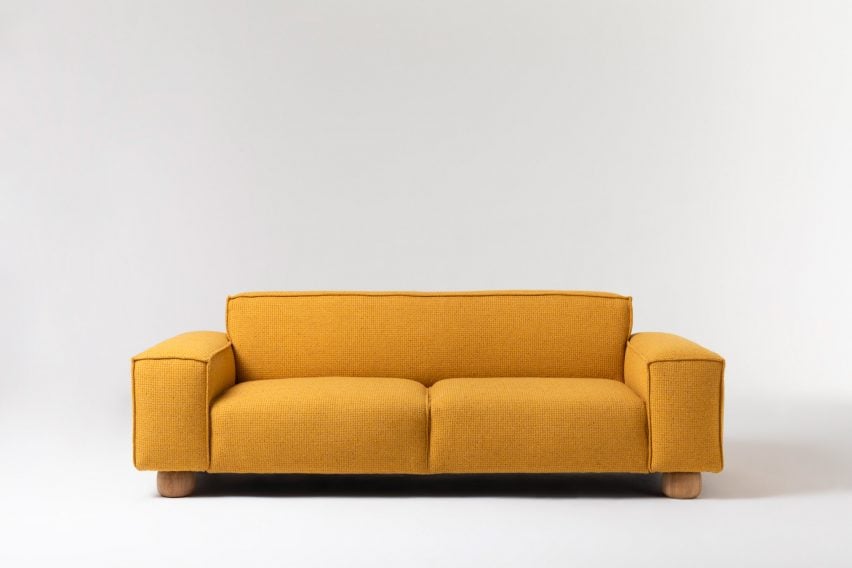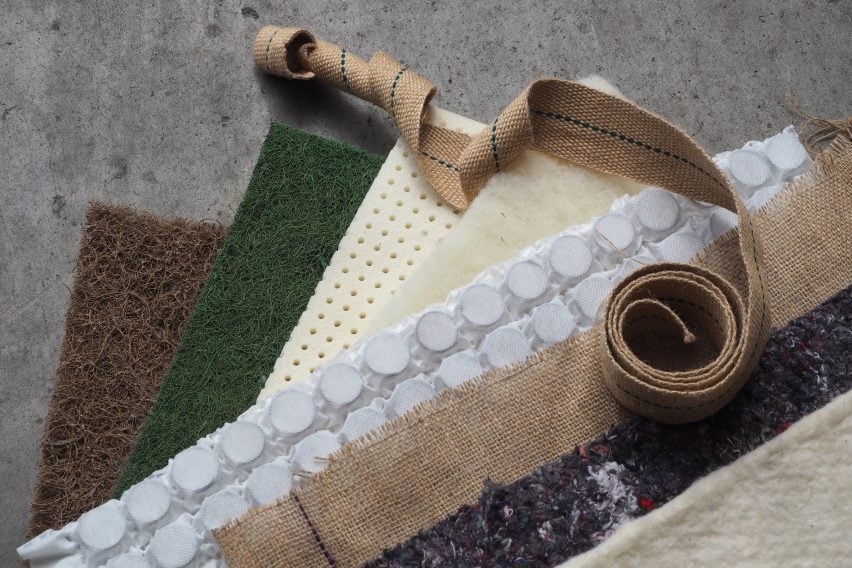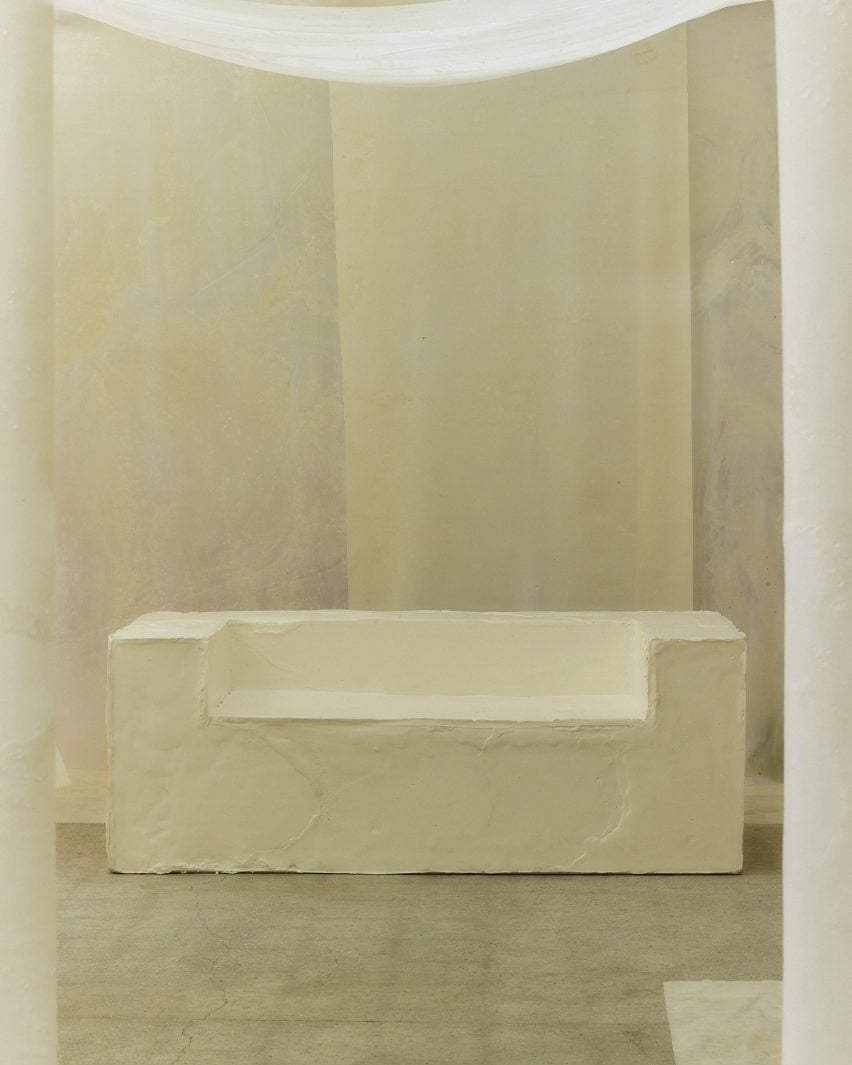Fossil fuel-based polyurethane foam has been a firm favourite in furniture manufacturing for over half a century. Jane Englefield investigates the consequences of this dependable but unsustainable material.
Polyurethane foam is created by mixing chemicals derived from crude oil with specific blowing agents to produce a flexible plastic with a cellular structure that has the potential to be soft, hard and everything in between.
Associated with comfort, durability and affordability for both maker and consumer, the versatile material has dominated the soft furniture industry since the late 1950s, after modernist Danish designer Arne Jacobsen swapped traditional wood and steel for foam to sculpt the distinctly enveloping seat of his iconic Egg chair.
Foam is a “significant problem”
“Our furniture design has been led, almost from that point, into this mouldable, what you might call organic, form development – that is where foam really works very well,” said Tom Lloyd, co-founder of London industrial design studio Pearson Lloyd.
“When it comes to moulding a comfort surface, polyurethane foam is the absolute master of that,” he added. “You can inject stuff into a mould and out pops something comfortable.”
Production of the material is on the rise. Last year, an estimated 1.38 million tonnes of flexible polyurethane foam slabstock was produced in Europe, a 1.8 per cent increase from 2022. But despite its trademark reliability, the material raises serious questions about sustainability and public health.
Foam is a “significant environmental and safety problem”, according to Celine Sandberg, founder of all-women-run Norwegian biofoam manufacturer Agoprene.
“Polyurethane is the product of two petrochemicals, derived as by-products of the petroleum industry, which makes it extremely affordable but highly polluting,” she said.
One of the primary problems with polyurethane foam is that although it is cheap to produce, it is costly and energy-intensive to recycle.
Because the material is a thermosetting polymer it cannot be melted and reshaped like some other plastics.
Instead, polyurethane foam can currently only be recycled if it is ground into a fine powder and mixed with more virgin material, or broken down chemically.
“You can’t melt it down,” said Lloyd. “It just burns.”
According to Sandberg, the global production of petroleum-based furniture foam emits 105 million tonnes of carbon dioxide annually, with less than 10 per cent of furniture recycled across the European Union.
“To put it into perspective, every year, 40 million mattresses – equivalent to 904 times the height of Mount Everest – reach the end of their life,” she added.
The material is “very bad for your health”
Polyurethane foam is also a public health issue. As a highly flammable material, it is easily ignited at temperatures as low as 250 degrees Celsius.
This results in “dangerous levels of heat and toxic smoke” being released into the environment when it burns, said Sandberg.
As a result, many products using polyurethane foam-based upholstery are chemically fire-proofed, with the UK making this a legal requirement in the late 1980s.
“There were lots of stories about houses burning down because someone dropped a cigarette on their sofa,” said Lloyd.
“But it turns out that the fire retardant is quite badly carcinogenic,” he continued. “The current viewpoint is actually that the damage of the retardant is worse than the damage of the potential fire.”
“First you have the problem of the foams themselves – how they are made and then recycled – and then you have the off-gassing from the fire retardants in the foam, which research suggests are very bad for your health,” agreed Sheridan Coakley, founder of British furniture brand SCP.

And there are more everyday implications, too.
“If the foam is not kept in tip-top shape – in other words, is the old and crumbling foam that you may see in vintage sofas and chairs – the dust is pretty harmful stuff,” explained Sam Hecht, co-founder of London studio Industrial Facility.
“So even if you were to overlook the fossil fuel aspect, it’s not a healthy material to have around the home or in waste streams.”
There is a growing desire among designers to find alternatives – although this is not without its hurdles.
“The current ‘benefits’ of foam are its lightweight quality, performance and manufacturing price, which is why I think a lot of industries keep using it,” said Copenhagen-based Natural Material Studio founder Bonnie Hvillum, who recently crafted an entire experimental home from bioplastic.
“It’s difficult to compete with this, as sustainable materials are generally 30 to 100 per cent more expensive than linear materials,” she added.
“It’s the same comparison as food. If you want organic and quality vegetables and meat, it can sometimes cost double the price of conventionally farmed produce.”

Agoprene is among the current offerings of alternatives to oil-based foam. The biodegradable material is made from renewable seaweed biomass mixed with other bio-based ingredients, which are processed into inherently fire-retardant foams with various densities. Sandberg and her team use raw materials derived from waste streams to limit costs.
The material is produced in sheets rather than large blocks, or moulded into specific shapes, and can be tailored to have minimal air pockets to ensure a dense seat that does not easily deflate over time, the designer said.
Pearson Lloyd also previously collaborated with British brand Modus to create a foam-free furniture collection, which was padded with coconut fibres bound together with latex – two natural alternatives to polyurethane.
“We built back the comfort surface by going back 100 years to traditional making methods,” explained Lloyd.
“I think we’ve become a bit lazy,” he continued. “I’ve never seen that sustained cost should be a barrier to sustainability. I think it’s an easy way out.”
SCP’s upholstery has become polyurethane foam-free – a project that Coakley said took over a decade to complete. Consequently, the brand uses materials including latex, feathers and recycled wool as alternative fillings for its furniture.
“Our perspective is that the best way to mitigate the problem of polyurethane foam is to remove it from the supply chain entirely,” explained Coakley.
Hvillum also cited a series of biomaterials as promising alternatives – from projects using fungi and bacteria growth to the biopolymers her studio has become known for.
“For these alternatives, it’s crucial that they win support from larger companies, as these are the ones that potentially could pave the way for new material alternatives,” said Hvillum.
“Ultimately, it’s a political decision we as consumers take on [about] what we want to invest our earnings in. So really, it’s a shame that furniture companies don’t offer the consumer more choice when, for example, choosing their next sofa.”
“We seem so obsessed with longevity and endless lifespans on materials, but it contradicts our wish for organic materials, and even more so, it contrasts how we consume,” she added.
“There are so many studies showing how many years on average we keep a sofa before our needs change and we buy a new one. So I’m left wondering why we are so afraid of using organic alternatives that work in a closed-loop system, instead of choosing synthetic materials that signal that they last forever when they actually don’t, but we think they do,” continued the designer.

“Maybe we just have to turn away from being able to mould something into any shape we like,” considered Lloyd. “Because it’s very difficult to mould in a non-polymer material.”
The challenge presented by foam and reducing its prevalence strikes at some fundamental questions for designers, he argues.
“There’s another argument, which is if you make stuff beautiful enough, it will sustain. And I think that’s nonsense. I think we can’t rely on people’s tastes,” he said.
“Maybe five per cent of furniture endures because it has some cultural value that makes us suddenly go, ‘that chair has to exist in 100 years’.”
“The Egg chair might endure, but all the other products on either side of the Egg chair that weren’t very good – those are the ones that create the damage.”
“It is a knotty problem. And it’s not easy to solve,” concluded Lloyd. “But it’s also a much more interesting time to be a designer.”
The main image is courtesy of Shutterstock.
Dezeen In Depth
If you enjoy reading Dezeen’s interviews, opinions and features, subscribe to Dezeen In Depth. Sent on the last Friday of each month, this newsletter provides a single place to read about the design and architecture stories behind the headlines.

